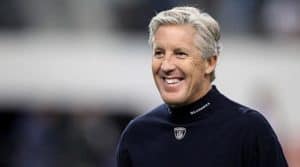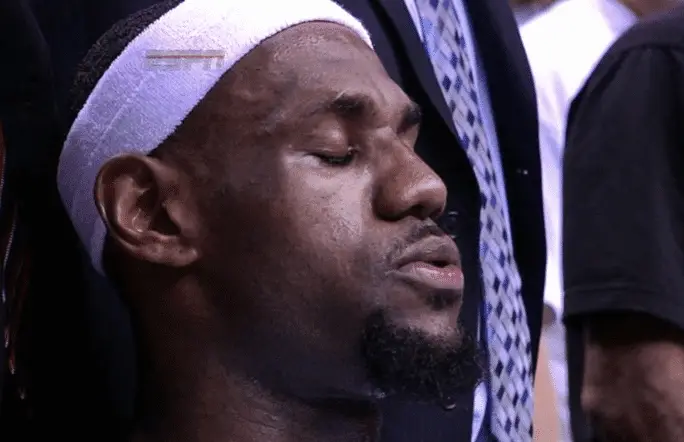Table of Contents
Mindfulness, Positive Reinforcement and Coaching
Imagine you are in a weight room working out and you overhear a coach talking to an athlete…The workout involves a rowing machine and reaching a certain power output that is indicated by a monitor that both the athlete and coach can see. The athlete is  beginning to show signs of fatigue and the coach starts to raise his voice to encourage the athlete to reach her goal: “Don’t you quit now. Don’t you even think about quitting. You have worked too hard today to quit this. Don’t you give up!!!”. The athlete does not meet her goal. What did her brain hear? Quit, give up, worked too hard and don’t. This is an example of negative reinforcement.
beginning to show signs of fatigue and the coach starts to raise his voice to encourage the athlete to reach her goal: “Don’t you quit now. Don’t you even think about quitting. You have worked too hard today to quit this. Don’t you give up!!!”. The athlete does not meet her goal. What did her brain hear? Quit, give up, worked too hard and don’t. This is an example of negative reinforcement.
In contrast, listen to this coach and how he encouraged his athletes to reach their goals:
This particular coach used positive reinforcement to plant seeds in the minds of the athletes he was encouraging. These are seeds that an athlete can wrap their mind around to encourage a strong outcome. The athlete in this video heard the words yes, one more, find a rhythm, come on. These words assist their mindsets to achieve and want more from themselves.
We can all agree that the landscape of how sports are played and coached is constantly evolving. If we investigate a short history of coaching beginning in the post-world war II era, the model was patterned after the military. The coach was the commander and the techniques were rooted in disciplinary action. Coach Phil Jackson explains that the time has arrived for coaching to evolve from the military style to a positive reinforcement model.
This article will explain:
*This post may contain affiliate links. As an Amazon Associate we earn from qualifying purchases.
- Differences between positive and negative reinforcement
- Simple strategies for how to implement positive coaching
- Summarize how and why mindfulness can positively impact coaching.
Motivation and Reinforcement
 Every coach has a style and part of that style is the strategy that is used to motivate athletes. Every coach, whether he or she is aware of it, taps into the psyche of their athletes. It is important to mention that athletes can not improve unless a coach tells them what they need to do differently. However, there are many ways to deliver the message with clarity and mindfulness.
Every coach has a style and part of that style is the strategy that is used to motivate athletes. Every coach, whether he or she is aware of it, taps into the psyche of their athletes. It is important to mention that athletes can not improve unless a coach tells them what they need to do differently. However, there are many ways to deliver the message with clarity and mindfulness.
A great deal has been written about athletes needing to be mentally tough and mentally smart. We teach athletes how to motivate themselves through positive words or images (internal motivation), to learn tools to mange stress and performance anxiety, and how to rise to challenges as they occur. It is strange to imagine training an athlete to visualize negative images, yet many times negative reinforcement from coaches trains athletes to visualize what they DO NOT want to happen.
As a leader of a team, a coach can be mindful by knowing how they affect their athletes through words and actions (external motivation). Coaches also need to have a host of tools to help athletes perform at their highest level. One of the tools coaches should begin to use more is positive reinforcement. There is a great online resource called Positive Coaching Alliance that assists coaches in developing an awareness toward positive reinforcement as the first step in the coaching process. Like any skill development, this coaching technique takes practice and patience while learning how and when to apply positive reinforcement. The main point to reinforce is that a coach that has an active awareness regarding the implementation of positive reinforcement which will assist an athlete by opening the door to powerful portions of their psyche. The science that supports positive reinforcement is centered around a portion of the brain called the limbic system. The function of the limbic system is to control a person’s emotional response. This is a crucial part of understanding WHY positive reinforcement is important. We can illustrate this by using a simple example that is not related to sports: A person is interested in purchasing a new car. For this example, the car is a red Toyota  Highlander. The person has a picture in her head and her senses are keen to see red toyota highlanders on the road. She notices them more frequently now that she has decided that is the car she wants to purchase. These parts light up the brain in the limbic system and specifically in the amygdala. Think of the amygdala functioning like a TV antenna. It is searching for what she wants, which is a red Toyota Highlander. This is what the amygdala does for our mind. This is a crucial point for WHY positive reinforcement can be good food for the brain. If we mindfully place what we WANT in our brain, then the amygdala will actively seek this out for us. This is where a coach can make a powerful impact by feeding their athletes what they do want them to do in combination with teaching them how to correct mistakes.
Highlander. The person has a picture in her head and her senses are keen to see red toyota highlanders on the road. She notices them more frequently now that she has decided that is the car she wants to purchase. These parts light up the brain in the limbic system and specifically in the amygdala. Think of the amygdala functioning like a TV antenna. It is searching for what she wants, which is a red Toyota Highlander. This is what the amygdala does for our mind. This is a crucial point for WHY positive reinforcement can be good food for the brain. If we mindfully place what we WANT in our brain, then the amygdala will actively seek this out for us. This is where a coach can make a powerful impact by feeding their athletes what they do want them to do in combination with teaching them how to correct mistakes.
Positive Reinforcement and Coaches
In a recent column written by John Russo, PhD, he encouraged coaches in the Elite Development League for hockey to make a special effort to get results from girls and boys playing hockey by using positive reinforcement. One important point Russo makes is that coaches typically don’t know the environments surrounding athletes outside of the rink or gym. Maybe their home or school or other athletic teams are not positive or safe. If this is the case, creating a sense of safety via positive reinforcement might be even more important for athletes to excel. Many times athletes who do not have a safe home environment are not told when their behavior is positive, rather they receive punishment or negative comments about their performance. This requires coaches to remain composed, and to know how to cultivate a positive and safe environment for athletes. The premise is that if coaches speak with positive feedback first then this can help an athletes feel good, which results in an internal motivation to play harder for the coach and the team. Positive reinforcement is about seeing what went well and making a point of acknowledging this to the athletes.
How Does a Coach Cultivate a Positive Environment?
 Russo recommends that coaches should acknowledge what is going well and then tell a player or a team when this occurs. Examples include:
Russo recommends that coaches should acknowledge what is going well and then tell a player or a team when this occurs. Examples include:
- Good warm up
- Good practice
- The team needs you
- You did that drill correctly
- Catching an athlete doing what you want and complimenting them
- Creating Dream Boards
You can still demand the best from people and explain what 100% effort is and why it’s important for the athlete to give they’re all at every opportunity. Acknowledge when athletes show up and are ready, and discuss how effort and behavior affect others. This is teaching athletes to be mentally smart and to gain awareness of how their behaviors affect others.
Mindfulness and Positive Reinforcement
Mindfulness is the act of being aware in the moment. This means having the clarity to know when and how to use positive reinforcement. Every coach has to have important moments of awareness and to know when positive reinforcement might be the tool to use in a given moment. Coaches can yell at refs and shout at players when frustrated. But the smart coach is mindful and knows when to re-frame and use a different approach for a specific athlete or a team.
 We have written a simple and short book to guide coaches and athletes in learning basic mindfulness skills. This video explains why mindfulness can be a useful mental tool helping coaches and athletes tap into their mental game. Below the video is a explanation about each slide of the prezi.
We have written a simple and short book to guide coaches and athletes in learning basic mindfulness skills. This video explains why mindfulness can be a useful mental tool helping coaches and athletes tap into their mental game. Below the video is a explanation about each slide of the prezi.
In the end, every person wants to feel good about himself and herself. We can teach athletes about good skills and personal mental toughness, but coaches are a huge part of building these things through external reinforcements. Positive words spoken out load by a coach can then become internal motivators and confidence builders used by their athletes on and off the ice, field, or track!

